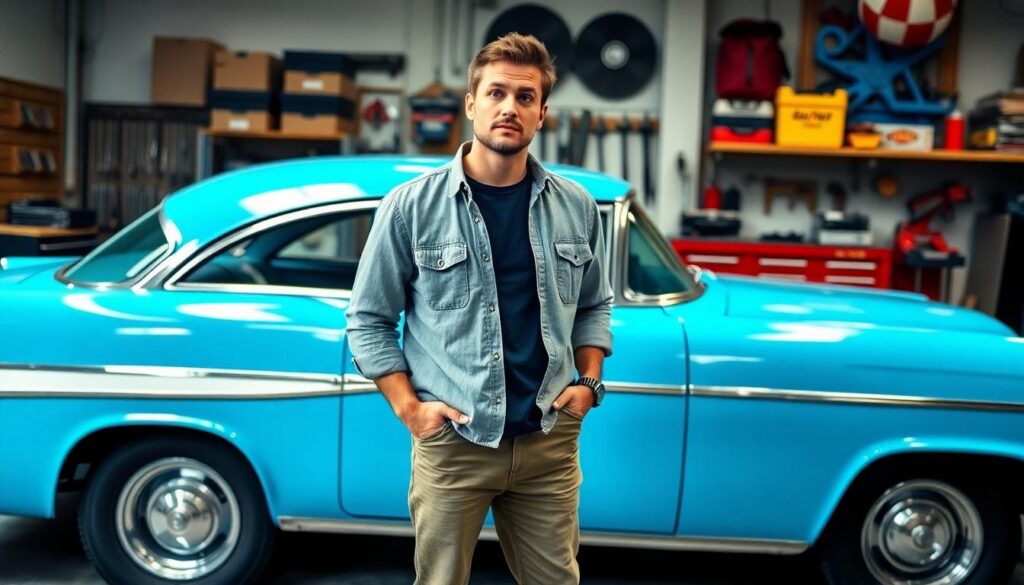Ready to rev up your brain with some automotive mental horsepower? We’ve assembled the ultimate collection of car riddles that’ll challenge even the most devoted gearheads and puzzle enthusiasts alike.
10 Challenging Automotive Riddles to Test Your Car Knowledge
- I travel on four wheels but never move on my own. People sit inside me and take control. What am I?
A car is the answer to this classic riddle that highlights the fundamental nature of automobiles as vessels that require human operation. Most vehicles need drivers to function, serving as extensions of human mobility rather than autonomous entities.
- I have a horn but no head, and a body but no neck. What am I?
The answer is a car, featuring its distinctive horn for signaling and a body structure that houses all components. Car horns have evolved from simple bulb horns to complex electrical systems that alert other drivers to your presence on the road.
- I get smaller every time I take a trip. What am I?
A tire gradually wears down with each journey, losing rubber through friction with the road surface. Tires typically last between 25,000 to 50,000 miles depending on driving habits, road conditions, and tire quality.
- I have windows but no glass, a key but no lock, and wheels but no legs. What am I?
A car matches this description perfectly with its window openings, ignition key, and wheel system. Modern vehicles contain approximately 30,000 parts working in harmony to provide transportation.
- I drink fuel but never get full. The more I drink, the farther I go. What am I?
An engine consumes gasoline or diesel to power the vehicle’s movement. Average modern engines can convert about 20-30% of fuel energy into actual vehicle movement, with the rest lost as heat and friction.
- I’m found on cars but am not mechanical. I change colors over time and protect what’s beneath me. What am I?
Paint serves as both protection and aesthetic enhancement for vehicles. Most cars receive between 5-8 coats of paint and clear coat, totaling only about 0.1mm in thickness but providing crucial protection against elements.
- Without me, a car is just a metal box. I’m the heart that gives it life. What am I?
The engine powers everything in the vehicle, converting fuel into kinetic energy. A typical V6 engine contains over 240 individual parts and can make more than 6,000 controlled explosions per minute at highway speeds.
- I’m always in front but never in back. I guide the way but never move. What am I?
Headlights illuminate the path ahead without physically moving forward themselves. Modern LED headlights can cast light up to 300 feet ahead, significantly improving nighttime driving safety compared to older halogen systems.
- I have pedals but am not a bicycle. I have a trunk but am not an elephant. What am I?
A car features control pedals and storage space known as a trunk (or boot in some countries). The average sedan trunk can hold approximately 15 cubic feet of cargo, equivalent to about 4-6 suitcases.
- People step on me all day, but I never complain. I control the speed but never move myself. What am I?
The accelerator pedal regulates vehicle speed through driver input. This small component connects to the throttle system that controls how much air and fuel enter the engine, determining power output and vehicle velocity.
The Classic Engine Enigma: What Has No Wheels but Makes Cars Move?
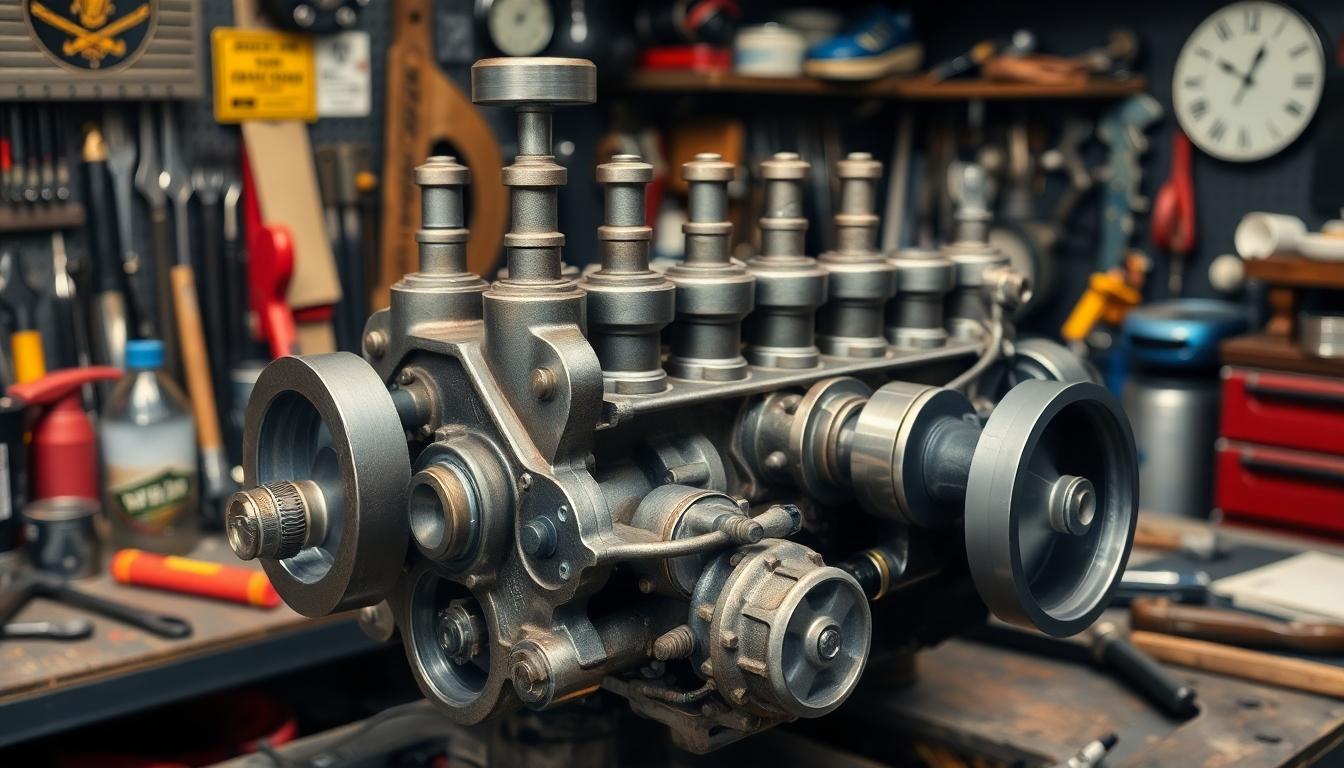
This classic automotive riddle challenges your understanding of what truly powers vehicles. While cars have many components, one stands above all others as the heart of the machine.
Solution and Explanation
The answer is an engine. Engines themselves don’t have wheels, yet they generate the power that makes vehicles move. They convert fuel into mechanical energy through combustion, creating the force necessary to turn the transmission and eventually the wheels. Without an engine, a car becomes nothing more than an elaborate metal sculpture on wheels. Engines work by harnessing controlled explosions of fuel and air mixtures to push pistons, which then rotate the crankshaft. This rotational energy transfers through the transmission to the wheels, propelling the vehicle forward.
Historical Context of Engine Development
The evolution of automotive engines spans more than a century of innovation. Karl Benz created the first practical automobile with a gasoline-powered internal combustion engine in 1885, revolutionizing transportation forever. Steam engines preceded gasoline ones, powering early vehicles with bulky, inefficient systems that required important preparation time. Gottlieb Daimler and Wilhelm Maybach developed the first high-speed gasoline engine in 1885, setting the foundation for modern automotive propulsion. Electric motors actually competed with gasoline engines in the early days of automobiles, with Thomas Edison and Henry Ford even collaborating on electric vehicle projects. Ford’s introduction of the assembly line in 1913 made gasoline-powered vehicles more affordable, cementing internal combustion as the dominant technology. Diesel engines emerged in the 1920s, offering greater efficiency for commercial vehicles and eventually passenger cars. Modern innovations include hybrid powertrains, fuel injection systems, and fully electric motors, each advancing the basic concept of converting energy into motion without wheels of their own.
Tire Teasers: Round and Round They Go, Where They Stop…

Tires are the unsung heroes of our vehicles, constantly in contact with the road yet often overlooked in their complexity. We’ve compiled some brain-teasing riddles about these essential rubber components that will test your automotive knowledge.
The Rubber Meets the Road: Answers
- What gets worn out but never tired? Car tires experience constant wear from road friction yet never experience fatigue like humans do.
- I’m round and black with patterns on my face, I grip the ground and help you set the pace. What am I? A tire provides the crucial traction needed for acceleration, braking, and cornering.
- What has pressure but can’t think, rolls along but doesn’t drink? Tires require proper air pressure to function correctly but lack consciousness or thirst.
- I’m punctured easily but rarely bleed, unless I’m filled with something special indeed. What am I? Modern run-flat tires can continue functioning temporarily after punctures, though traditional tires filled with colored sealant might “bleed.”
- What wears treads but never walks? Tires feature tread patterns for grip and water displacement but don’t actually walk like humans or animals.
- I spin thousands of times every journey but stay in the same place. What am I? Tires rotate continuously during travel while maintaining their position on the vehicle.
Interesting Tire Technology Facts
| Technology | Introduction Year | Primary Benefit |
|---|---|---|
| Radial Tires | 1946 | Improved fuel efficiency and handling |
| Run-Flat Tires | 1980s | Can operate temporarily after puncture |
| Low Rolling Resistance | 1992 | Reduced energy loss and better fuel economy |
| Airless Tires | 2005 | Elimination of flats and maintenance |
| Smart Tires | 2017 | Real-time monitoring of road conditions |
Tire technology continues advancing rapidly with innovations like self-healing rubber compounds. Manufacturers now produce tires containing natural materials such as orange peels and soybean oil to reduce petroleum dependence. Modern tires last approximately 60,000 miles on average, representing a important improvement over earlier designs that might only last 10,000 miles. Computer modeling allows engineers to test virtual tire designs against thousands of road conditions before physical prototypes are created. Temperature changes affect tire pressure significantly, with tire pressure typically decreasing about 1 PSI for every 10°F drop in temperature.
Brake Brain Busters: I Can Stop a Ton of Metal, What Am I?
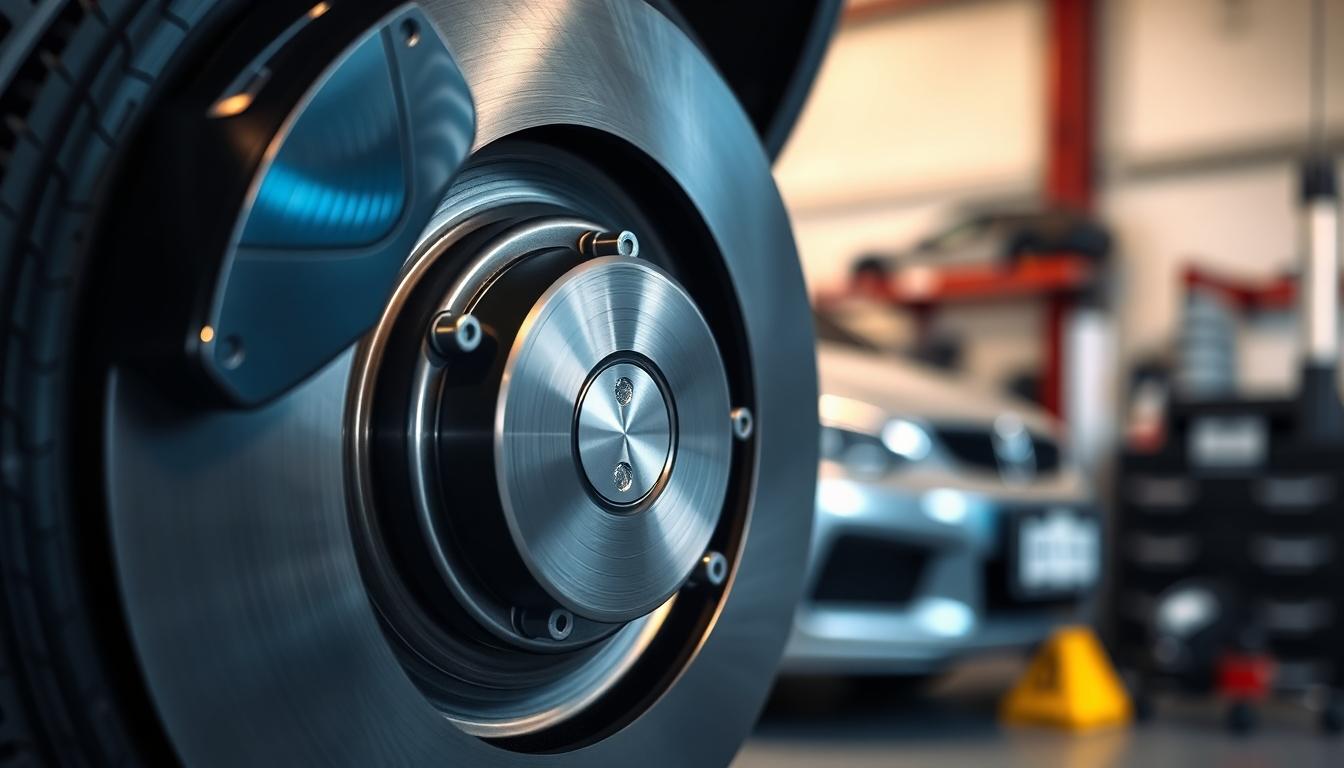
Decoding the Brake System Puzzle
Brakes are the unsung heroes of vehicle safety, capable of halting thousands of pounds of moving metal with remarkable precision. These critical components work through friction, converting kinetic energy into heat to bring your vehicle to a stop. Many drivers overlook the complexity behind the simple action of pressing a pedal. Modern vehicles typically employ disc brakes on front wheels and either disc or drum brakes on rear wheels, creating a balanced stopping system. Hydraulic pressure multiplies the force from your foot to engage brake pads against rotors, generating the friction necessary to slow and stop your car. Without this crucial system, cars would become unstoppable projectiles, making brakes perhaps the most important safety feature in any vehicle.
Evolution of Braking Technology
Braking systems have undergone dramatic transformations since the earliest wooden block brakes used on horse-drawn carriages. Early automobiles relied on mechanical brakes activated by levers and cables, offering limited stopping power at best. Hydraulic brakes emerged in the 1920s, revolutionizing vehicle safety by distributing force evenly to all wheels. Disc brakes became mainstream in the 1950s, providing superior heat dissipation and consistent performance compared to older drum systems. Anti-lock Braking Systems (ABS) appeared in the 1970s, preventing wheel lockup during emergency stops and allowing drivers to maintain steering control. Electronic Stability Control built upon ABS technology in the 1990s, actively preventing skids by applying individual wheel brakes automatically. Today’s regenerative braking systems in electric and hybrid vehicles capture energy during deceleration, converting it back to electricity to extend driving range. Autonomous emergency braking represents the latest innovation, using sensors to detect potential collisions and apply brakes automatically when human reaction time proves insufficient.
Transmission Twisters: Shifting Through the Gears of Logic

Manual vs. Automatic: Riddle Answers
- What has gears but can’t think? A car transmission shifts through different ratios without needing a brain, enabling your vehicle to efficiently convert engine power into motion.
- I get clutched when excited but never play sports. What am I? The clutch pedal in a manual transmission connects and disconnects power between the engine and wheels, allowing for smooth gear changes.
- What speaks in H’s? A manual transmission’s shift pattern often includes an H-shaped gate that guides drivers through different gear positions.
- I have a stick but can’t walk, and shift without changing clothes. What am I? A manual transmission uses a stick shift to change gears, allowing drivers to control their vehicle’s power delivery.
- What gets more tired as you shift up? The engine RPMs typically decrease when shifting to higher gears in a transmission, making the engine work less hard at higher speeds.
- I’m automatic yet need your input to perform. What am I? An automatic transmission still requires driver input through selecting drive, reverse, or park, even though handling gear changes independently.
Transmission Trivia to Impress Your Mechanic
- First Automatic Transmission: Introduced by General Motors in 1940, the Hydra-Matic was the first mass-produced fully automatic transmission, revolutionizing driving accessibility.
- Manual Transmission Longevity: Manual transmissions typically last longer than automatics, often reaching 300,000 miles with proper maintenance compared to automatics’ average lifespan of 150,000-200,000 miles.
- Dual-Clutch Innovation: Developed initially for racing applications, dual-clutch transmissions can shift gears in milliseconds, offering the efficiency of manuals with the convenience of automatics.
- CVT Technology: Continuously Variable Transmissions have no fixed gear ratios, instead using a belt and pulley system to provide infinite gear ratios for optimal fuel efficiency.
- Transmission Fluid Facts: Automatic transmission fluid serves as hydraulic fluid, lubricant, and coolant simultaneously, making it one of the most multifunctional fluids in your vehicle.
- The Origin of “Stick Shift”: The term originated in the 1930s when manual transmissions featured a long lever extending from the floor, resembling a stick more than modern shorter shifters.
- Paddle Shifters Heritage: Borrowed from Formula 1 racing technology, paddle shifters allow drivers to manually control automatic transmissions without removing hands from the steering wheel.
- Transmission Weight Matters: A typical automatic transmission weighs approximately 50-100 pounds more than its manual counterpart, affecting vehicle performance and fuel economy.
Fuel System Puzzles: The Liquid That Powers But Never Drives
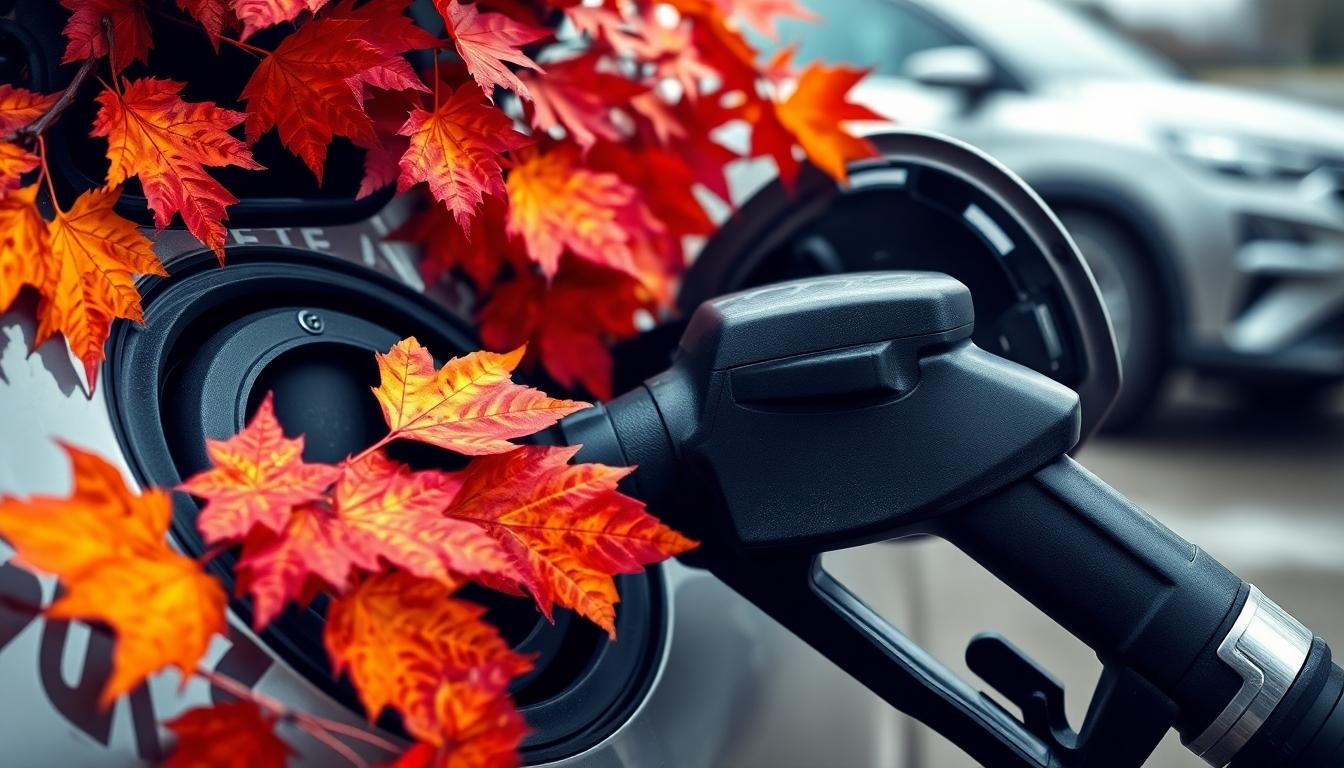
Gas Tank Conundrums Solved
What gets filled but never eats, and empties while standing still? Your car’s gas tank! Fuel systems represent the lifeblood of combustion engines, circulating the energy that propels vehicles forward. Modern vehicles contain sophisticated fuel delivery systems that precisely meter gasoline from tank to engine.
Consider this riddle: “I’m consumed but never hungry, I flow but never swim, without me engines sleep, what am I?” The answer is gasoline, the liquid gold that powers millions of vehicles worldwide. Interestingly, the average car’s fuel tank can hold between 12-16 gallons, equivalent to approximately 90,000 calories of energy—enough to theoretically power a human for 45 days.
Did you know fuel tanks are designed with expansion space, allowing about 10% extra capacity for fuel to expand in hot weather? This engineering detail prevents dangerous pressure buildup and potential leaks. Many newer vehicles feature capless fuel systems that automatically seal when the nozzle is removed, reducing evaporative emissions and eliminating the common problem of lost gas caps.
Here’s another puzzler: “What drinks more when it’s cold than when it’s hot?” A car’s fuel system! Vehicles typically consume 12-28% more fuel during winter months due to increased engine warm-up time, higher air density, and additional power requirements for heating systems.
Alternative Fuel Riddles
What fuel burns cleaner than gasoline but comes from beneath the earth? Natural gas! Alternative fuels present fascinating contradictions that make for excellent automotive riddles. Electricity powers vehicles without combustion, hydrogen produces only water as exhaust, and biofuels recycle carbon already in our atmosphere.
Try solving this one: “I’m made from yesterday’s waste, tomorrow’s power source, what am I?” Biodiesel represents the answer, typically produced from used cooking oils, animal fats, and plant materials. Vehicles running on pure biodiesel (B100) reduce carbon dioxide emissions by 74% compared to petroleum diesel.
Electric vehicles challenge our traditional notion of fuel altogether with this riddle: “What vehicle drinks while you sleep but never gets drunk?” An electric car charging overnight! EVs convert approximately 59-62% of electrical energy to power at the wheels, while conventional gasoline vehicles convert only about 17-21% of fuel energy to power—making electricity nearly three times more efficient as a transportation fuel.
Another mind-bender asks: “What fuel is lighter than air but carries the heaviest loads?” Hydrogen, which powers fuel cell vehicles by combining with oxygen to produce electricity, with water vapor as the only emission. Even though being the lightest element, hydrogen contains nearly three times the energy content per weight compared to gasoline, though it requires sophisticated storage answers due to its low density.
Electrical System Mind-Benders: Sparks That Start Journeys

Electricity powers the modern automobile in ways both obvious and hidden. These riddles challenge your understanding of the complex electrical systems that bring vehicles to life at the turn of a key.
Battery and Alternator Riddles Decoded
- What gives cars life but never breathes? The battery serves as the heart of every vehicle’s electrical system, providing the initial power needed to start the engine without requiring oxygen itself. Unlike humans who need breath, a car battery uses chemical reactions to generate the electrical current that powers the starter motor.
- I’m charged when working but drained when resting. What am I? Car batteries experience an interesting paradox—they recharge while the vehicle runs thanks to the alternator, but slowly lose charge when the car sits idle. Chemical reactions continue even when the car is off, resulting in parasitic drains from systems like the clock and security features.
- What spins to create power but isn’t a windmill? The alternator converts mechanical energy from the engine’s rotation into electrical energy through electromagnetic induction. When your engine runs, the alternator’s rotor spins within a stator, generating AC current that’s converted to DC power to recharge the battery and power electrical components.
- I’m belted but never wear pants. What am I? Alternators rely on serpentine belts to transfer rotational energy from the engine’s crankshaft. These crucial belts drive multiple components simultaneously, including the alternator, water pump, and power steering pump.
- What has posts but never sends mail? Battery terminals, often called posts, provide the connection points for the electrical system but never deliver physical mail. These lead posts (positive and negative) serve as the battery’s interface with the vehicle’s electrical network.
Modern Automotive Electrical Challenges
- What has many modules but isn’t a space station? Today’s vehicle electrical systems include many electronic control modules (ECMs) managing everything from engine performance to climate control. Luxury vehicles often contain 50+ interconnected computer modules communicating through complex data networks.
- I’m a computer that drives but has no license. What am I? The Engine Control Unit (ECU) manages critical driving functions without requiring driver education. This sophisticated computer processes data from dozens of sensors to optimize fuel delivery, ignition timing, and emissions control in real-time.
- What has a harness but isn’t a horse? Wiring harnesses organize and protect the complex network of electrical wires throughout modern vehicles. These intricate assemblies contain hundreds of individual wires and connectors, bundled together to transmit power and signals between components.
- I light your way but never strike a match. What am I? The headlight system illuminates roads through electrical power rather than combustion. Modern LED and HID headlights transform electrical energy into brilliant light while consuming significantly less power than traditional halogen bulbs.
- What reads without eyes and warns without a voice? Automotive sensors continuously monitor vehicle conditions without human senses. From oxygen sensors analyzing exhaust composition to wheel speed sensors detecting potential skids, these electronic sentinels feed critical data to the vehicle’s computers, triggering warning lights when problems arise.
Dashboard Dilemmas: I Have Faces But Cannot Smile
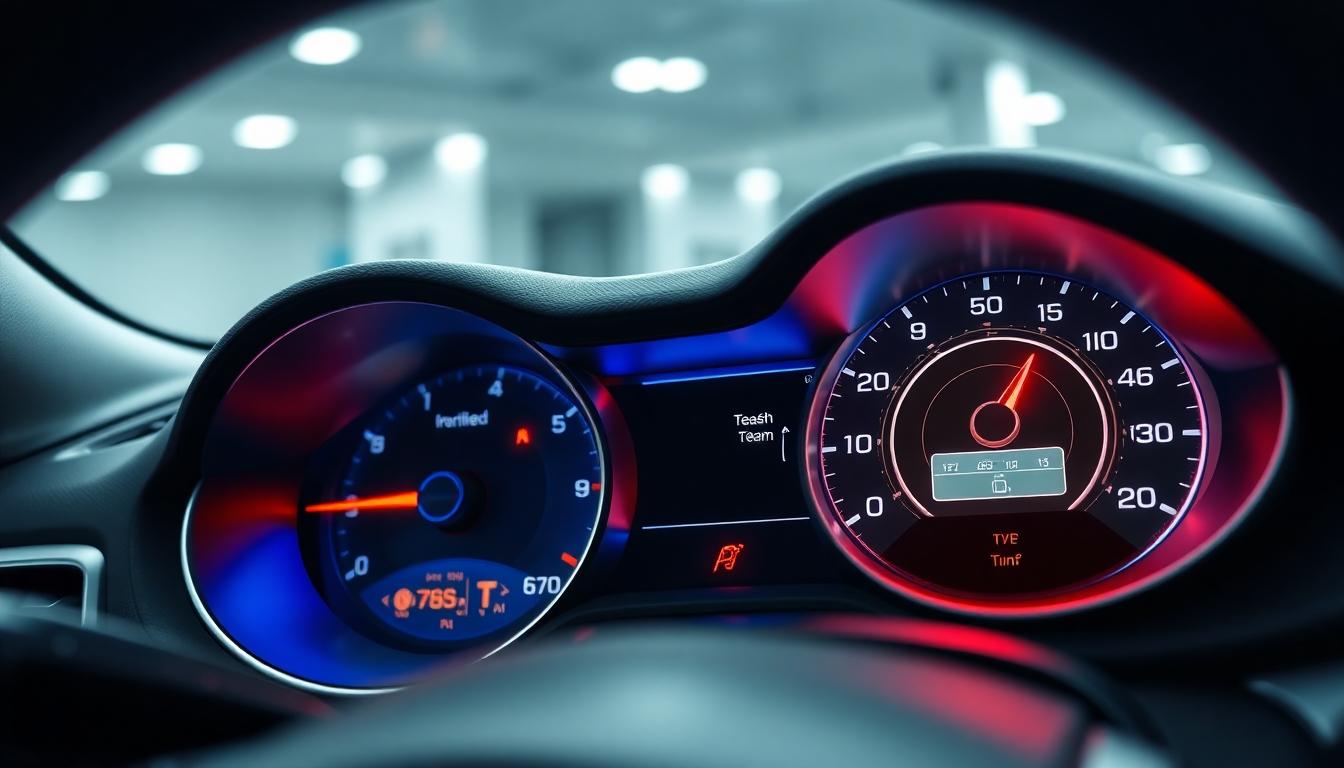
Gauge and Indicator Mysteries Revealed
Dashboard gauges stare back at drivers daily yet remain one of the most overlooked aspects of automotive design. “I have faces but cannot smile, I tell truths but cannot speak, what am I?” The answer is your car’s gauges and indicators. These silent communicators provide vital information through circular “faces” displaying everything from speed to fuel levels.
Modern vehicles typically feature four primary gauges: the speedometer showing velocity, the tachometer indicating engine RPMs, the fuel gauge monitoring gas levels, and the temperature gauge tracking engine heat. Early car dashboards from the 1900s were remarkably simple, offering minimal information compared to today’s sophisticated displays.
“I light up when there’s trouble, but I’m not a detective” refers to warning indicators that illuminate to signal potential problems. These warning lights evolved from simple oil pressure lights in early vehicles to today’s comprehensive system monitoring everything from tire pressure to transmission issues. Most drivers recognize the engine check light, yet studies show 64% of Americans continue driving for more than a week after it appears, potentially causing additional damage.
Evolution of Dashboard Displays
Dashboard technology has transformed dramatically since automotive pioneers first placed basic gauges in front of drivers. “We track your journey but never move, we illuminate your path but emit no light” describes the fascinating evolution of dashboard interfaces. The first automobiles featured minimal instrumentation, typically just an ammeter to monitor electrical systems and occasionally a basic speedometer.
The 1930s-1950s brought the golden age of analog gauges, when automotive dashboards became works of art featuring chrome-rimmed dials and elegant needles. Digital dashboards emerged in the 1980s, with Aston Martin Lagonda (1976) and Corvette C4 (1984) pioneering LED displays that seemed futuristic at the time.
Today’s vehicles feature sophisticated digital clusters with customizable displays showing navigation maps, entertainment options, and vehicle diagnostics simultaneously. Head-up displays (HUDs) project crucial information directly onto windshields, allowing drivers to monitor speed and navigation without looking away from the road. Augmented reality dashboards represent the next frontier, overlaying digital information onto the actual driving environment through the windshield, turning the entire front view into an informative “face” that enhances rather than distracts from the driving experience.
Exhaust System Enigmas: I Breathe Out What Cars Cannot Use
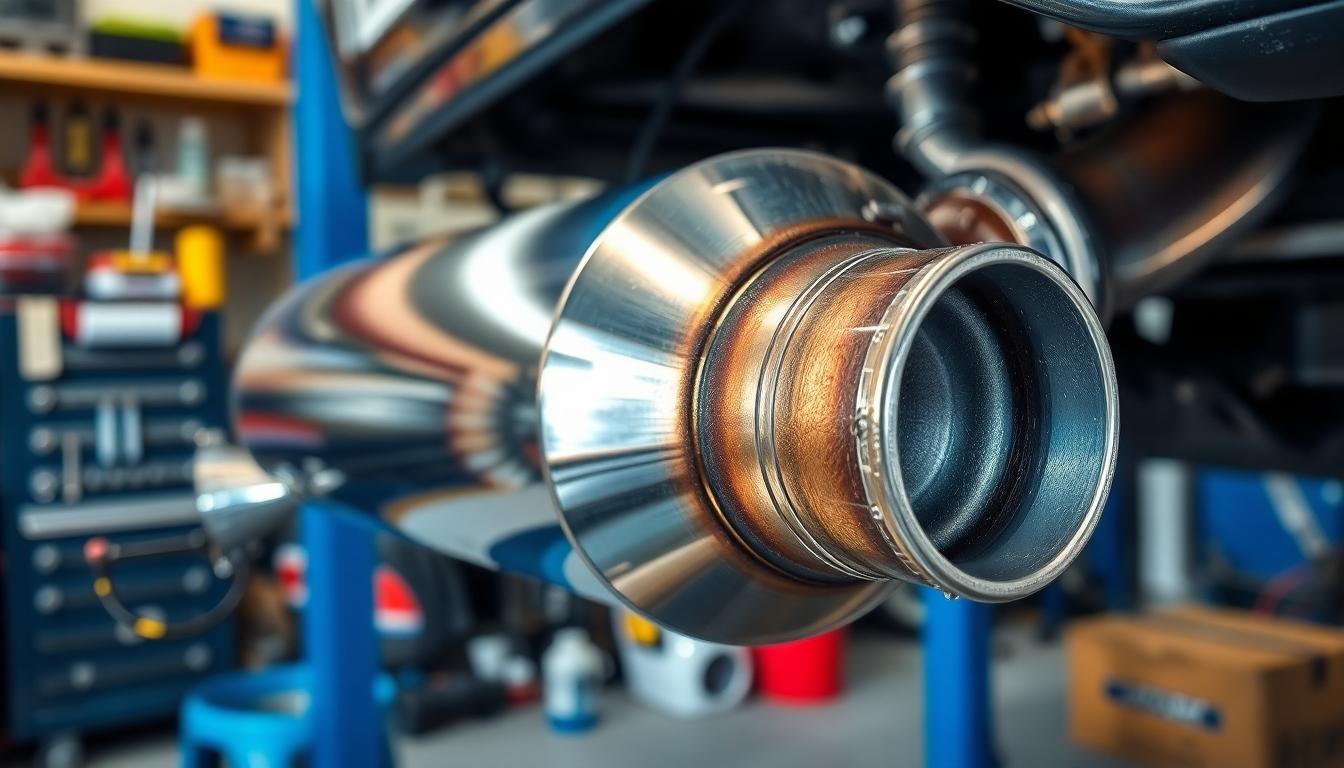
Exhaust systems, the unsung heroes of automotive engineering, expel harmful gases while maintaining optimal engine performance. These complex networks of pipes and components provide the perfect backdrop for some challenging automotive riddles.
Catalytic Converter Conundrums
What transforms poisons but isn’t an alchemist? The catalytic converter works its magic by converting harmful emissions into less toxic substances through chemical reactions. Inside this metallic chamber, precious metals like platinum, palladium, and rhodium serve as catalysts that transform carbon monoxide, hydrocarbons, and nitrogen oxides into carbon dioxide, water, and nitrogen. Thieves often target these components due to their valuable materials, with replacement costs ranging from $800 to $2,500 depending on the vehicle make and model. Modern catalytic converters can eliminate up to 90% of harmful emissions when functioning properly, making them crucial for meeting stringent environmental regulations worldwide.
Emission Standards in Riddle Form
I grow stricter with time but have no personality—what am I? Emission standards continuously evolve, with governments worldwide implementing increasingly rigorous regulations to combat air pollution. The first major emission controls appeared in the 1970s with the Clean Air Act in the United States, fundamentally changing vehicle design. Vehicles must now pass emission tests in many regions, measuring compounds like nitrogen oxides (NOx), carbon monoxide (CO), and particulate matter. Manufacturers invest billions in technology development to meet these standards, including innovative answers like selective catalytic reduction systems that inject urea answers to neutralize emissions. Electric vehicles sidestep traditional emission concerns entirely, producing zero tailpipe emissions and potentially representing the future of “clean” transportation as standards become virtually impossible to meet with internal combustion engines alone.
Suspension Stumpers: I Absorb Shocks But Feel Nothing

Spring and Strut Riddles Explained
What supports your car but never complains about the weight? Your vehicle’s suspension system. Springs and struts work tirelessly beneath your car, absorbing countless bumps while remaining completely silent about their efforts. Coil springs compress and expand over 1,500 times during an average 30-minute commute, yet they never tire of their repetitive task. Struts combine shock absorbers and structural support into one component, handling both damping and maintaining vehicle height simultaneously.
“I’m under pressure but never stressed” perfectly describes the MacPherson strut, found in roughly 70% of modern passenger vehicles due to its compact design and cost-effectiveness. Leaf springs, though older technology dating back to horse-drawn carriages, still serve modern trucks and SUVs with remarkable durability—some can withstand over 200,000 miles of regular use before replacement. Air suspensions present another riddle: “I inflate when loaded but don’t pop like a balloon,” offering adjustable ride height and comfort by using compressed air instead of traditional metal springs.
Comfort vs. Performance: The Suspension Balance
The ultimate suspension riddle challenges engineers daily: “How can I please everyone while satisfying no one completely?” This paradox represents the constant balance between comfort and performance that suspension designers face. Softer suspensions absorb road imperfections effectively, creating a smooth, comfortable ride that luxury vehicles like Mercedes-Benz pride themselves on. Performance-oriented suspensions sacrifice some comfort for responsiveness, with sports cars like Porsches utilizing stiffer springs that improve handling but transmit more road feedback to passengers.
Adaptive suspensions solve this riddle by offering multiple personalities within one system. These advanced setups use electronic controls to adjust damping rates in milliseconds—some high-end systems can make adjustments every 10 milliseconds based on road conditions. BMW’s Ever-changing Damper Control offers three distinct settings (Comfort, Normal, Sport), effectively creating three different vehicles from one suspension system. Independent suspension designs further complicate the riddle by allowing each wheel to respond to road conditions without affecting others, with 95% of modern passenger vehicles now utilizing some form of independent suspension. The most advanced systems even predict road conditions using forward-facing cameras to prepare suspension components before hitting bumps, solving the riddle of how to absorb shocks before they even occur.
Automotive History Riddles: From Model T to Tesla
We hope these automotive riddles have revved up your brain and sparked your curiosity about the incredible machines we drive every day. From engines and tires to brakes and suspension systems each component tells a fascinating story of innovation and engineering.
These brain teasers aren’t just fun challenges they’re windows into understanding how our vehicles function and evolve. Whether you’re a seasoned gearhead or simply appreciate the convenience of modern transportation there’s always something new to discover about cars.
Next time you’re behind the wheel take a moment to appreciate the complex symphony of parts working together to get you safely to your destination. And remember a little automotive knowledge can go a long way both on the road and at your next trivia night!
Frequently Asked Questions
What makes a good car riddle?
A good car riddle combines automotive knowledge with clever wordplay. It should be challenging but solvable, using car terminology in unexpected ways. The best riddles make you think outside the box while teaching something about vehicles. They often play on double meanings or highlight overlooked aspects of cars that we encounter daily.
Why is the engine considered the heart of a car?
The engine converts fuel into mechanical energy that powers the entire vehicle. Without it, a car cannot move under its own power. Just as the heart pumps blood throughout the body, the engine generates and distributes power to all systems. It’s the primary component that differentiates a car from a simple rolling chassis.
How have tire technologies advanced over the years?
Tire technology has evolved from simple rubber rings to sophisticated engineered products. Modern advancements include radial construction, run-flat capabilities that allow driving after punctures, and smart tires with sensors. Materials science has improved grip, durability, and fuel efficiency. Additionally, specialized tires for various conditions (winter, all-season, performance) have made driving safer in all environments.
What are the most important safety features in a car’s braking system?
Anti-lock Braking Systems (ABS) prevent wheel lock-up during hard braking, allowing drivers to maintain steering control. Electronic Brake-force Distribution optimizes braking pressure to each wheel. Emergency Brake Assist detects panic stops and applies maximum braking force. Modern vehicles also feature stability control systems that work with brakes to prevent skidding and rollovers.
How do manual and automatic transmissions differ?
Manual transmissions require drivers to physically shift gears and operate a clutch pedal, offering greater control and typically better fuel economy. Automatic transmissions handle gear changes independently, providing convenience at the cost of some efficiency. Modern automatics have narrowed this efficiency gap with technologies like dual-clutch systems and continuously variable transmissions (CVTs).
What alternative fuel options exist beyond traditional gasoline?
Alternative fuels include biodiesel derived from plant oils, ethanol from corn or sugarcane, compressed natural gas (CNG), hydrogen for fuel cells, and electricity for battery-powered vehicles. Each offers environmental benefits compared to gasoline, with reduced emissions and often lower operating costs. Electric vehicles represent the fastest-growing alternative, eliminating tailpipe emissions entirely.
Why is a car’s electrical system becoming increasingly complex?
Modern vehicles rely on sophisticated electronics to manage everything from engine performance to entertainment systems. The proliferation of driver assistance features, connectivity options, and comfort amenities has dramatically increased the number of electronic control modules. Today’s average vehicle contains 50+ computers and miles of wiring, a massive increase from the simple systems of decades past.
What information do dashboard warning lights convey?
Dashboard warning lights alert drivers to potential issues requiring attention. Red lights indicate serious problems demanding immediate action, such as engine overheating or low oil pressure. Yellow/amber lights suggest maintenance needs or non-critical malfunctions. Green or blue indicators simply confirm that systems like headlights or cruise control are active. Ignoring warning lights often leads to more severe problems.
How do catalytic converters reduce vehicle emissions?
Catalytic converters use precious metals (platinum, palladium, rhodium) as catalysts to convert harmful exhaust gases into less damaging substances. They transform carbon monoxide into carbon dioxide, hydrocarbons into carbon dioxide and water, and nitrogen oxides into nitrogen and oxygen. This chemical conversion significantly reduces a vehicle’s environmental impact, which is why they’re required by law in most countries.
What role does a car’s suspension system play?
The suspension system creates a comfortable ride while maintaining tire contact with the road. It absorbs impacts from road irregularities, prevents excessive body roll during cornering, and enhances overall stability. Modern adaptive suspensions can adjust firmness based on driving conditions, offering a balance between comfort and performance that was impossible with traditional fixed systems.

